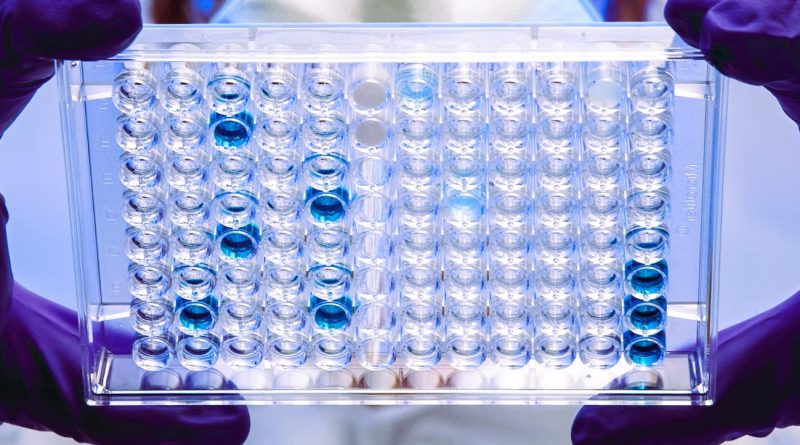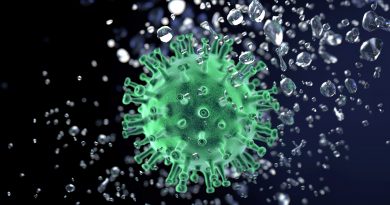Unveiling the Power of Sandwich ELISAs
In the realm of modern research laboratories, the Enzyme-linked Immunosorbent Assay (ELISA) stands as a true titan. This potent plate-based biochemical method, pioneered by Engvall and Perlman in 1971, has become an indispensable tool for detecting and quantifying proteins, antigens, antibodies, and biomolecules within complex mixtures. Its sensitivity knows no bounds, with a detection range spanning from a mere 0.01 ng to 0.1 ng or 0.1 to 1 fmole. At the heart of ELISA lies a reliance on the exquisite interactions between antibodies, making it a highly sensitive immunoassay (Engvall and Perlmann, 1971).
Understanding the Sandwich ELISA
Among the various ELISA formats, the Sandwich ELISA reigns supreme. It operates by entrapping an antigen between two layers of antibodies: the capture antibody and the detection antibody. These two antibodies, forming a matched pair, are essential components of this format. The target antigen under scrutiny must possess at least two antigenic sites capable of binding to antibodies. The capture antibody takes the stage first, facilitating the immobilization of the antigen, while the detection antibody, often conjugated to a fluorophore label or enzyme, plays a pivotal role in detecting the target antigen. This configuration aptly earns it the moniker “Sandwich ELISA” since the target antigen is effectively sandwiched between these antibodies (Crowther, 2001).
Choice of Antibodies in Sandwich ELISA
When it comes to selecting antibodies for Sandwich ELISA kits, researchers have two primary options: monoclonal antibodies and polyclonal antibodies. Monoclonal antibodies are adept at identifying a single epitope, allowing for the precise quantification of minor antigenic variations. On the other hand, polyclonal antibodies typically serve as capture antibodies, capturing as much of the antigen as possible (Hutchings and Ferris, 2006).
Direct and Indirect Variations
Sandwich ELISA comes in two distinct flavors: direct and indirect. In a direct Sandwich ELISA, the detection antibody may be enzyme-conjugated, while in cases where the detection antibody remains unlabeled, a secondary enzyme-conjugated detection antibody becomes essential, giving rise to the indirect Sandwich ELISA (Hutchings and Ferris, 2006).
Step-by-Step Procedure
The quintessential steps of a Sandwich ELISA entail coating a microtiter plate with the capture antibody and incubating it overnight. Subsequently, the coating solution is removed, and a blocking buffer is introduced to prevent unwanted protein binding. A PBS wash follows. Samples are then introduced into each well, and the microtiter plate is subjected to further incubation. Another round of PBS washing ensues before the detection antibody is added to each well, culminating in a two-hour incubation at room temperature. Following this, the plate undergoes four PBS washes, and finally, an enzyme-conjugated secondary antibody is introduced. This secondary antibody binds to the primary detection antibody, and when a substrate is added, a signal is generated, indicating the presence of the target antigen in the sample (Gonzalez et al., 2008).
Detecting the Signal
The magic of Sandwich ELISAs unfolds as the detection antibody binds to the target antigen in the sample. The conjugated enzyme then engages with the substrate, producing a signal. This signal can manifest as either light (chemiluminescence) or a simple color change, typically at 450 nm (colorimetric). The magnitude of the signal is directly proportional to the specific enzyme-substrate pair utilized for detection. When the target antigen is absent, the enzyme-conjugated detection antibody remains unbound, yielding no signal. In fluorescence ELISAs, a fluorophore replaces the enzyme in the detection antibody, emitting light upon excitation by incident light, which can be detected using an ELISA reader (TIP, 2010).
Why Sandwich ELISAs Excel
Sandwich ELISAs distinguish themselves as the gold standard due to several advantages. They are 2-5 times more sensitive than direct and indirect ELISAs, making them an invaluable choice for demanding applications. Moreover, Sandwich ELISAs are highly specific, leveraging the power of two antibodies to detect different epitopes, minimizing interference and producing precise results. These assays effortlessly analyze complex samples and can measure impure antigens with remarkable accuracy (Gonzalez et al., 2008). While competitive ELISAs have their merits, the Sandwich ELISA’s versatility and reliability continue to shine in the ever-evolving landscape of immunoassays.
References:
Crowther, J.R., 2001. Systems in ELISA. In The ELISA Guidebook (pp. 9-44). Humana Press.
Chiu, M.L., Lawi, W., Snyder, S.T., Wong, P.K., Liao, J.C. and Gau, V., 2010. Matrix effects—a challenge toward automation of molecular analysis. JALA: Journal of the Association for Laboratory Automation, 15(3), pp.233-242.
Engvall, E. and Perlmann, P., 1971. Enzyme-linked immunosorbent assay (ELISA) quantitative assay of immunoglobulin G. Immunochemistry, 8(9), pp.871-874.
Gonzalez, R.M., Seurynck-Servoss, S.L., Crowley, S.A., Brown, M., Omenn, G.S., Hayes, D.F. and Zangar, R.C., 2008. Development and validation of Sandwich ELISA microarrays with minimal assay interference. Journal of proteome research, 7(6), pp.2406-2414.
Hutchings, G.H. and Ferris, N.P., 2006. Indirect Sandwich ELISA for antigen detection of African swine fever virus: comparison of polyclonal and monoclonal antibodies. Journal of virological methods, 131(2), pp.213-217.
Hosseini, S., Vázquez-Villegas, P., Rito-Palomares, M. and Martinez-Chapa, S.O., 2018. General overviews on applications of ELISA. In Enzyme-Linked Immunosorbent Assay (ELISA) (pp. 19-29). Springer, Singapore.
TIP, T., 2010. ELISA technical guide and protocols. Thermo Fisher Scientific Inc USA, Bartlesville, OK.
Burkin, M.A., Nuriev, R.I., Wang, Z. and Galvidis, I.A., 2018. Development of Sandwich double-competitive ELISA for sulfonamides. Comparative analytical characteristics and matrix effect resistance. Food analytical methods, 11(3), pp.663-674.
Lugos, M.D., Damulak, O.D., Perikala, V., Davou, G.I., Obeta, U.M., Banda, J.M., Oluwatayo, B.O. and Okwori, J.A., 2019. Assay linearity and spike-recovery assessment in optimization protocol for the analysis of serum cytokines by Sandwich ELISA platform. Am J Biomed Sci, 3(2).
Miller, J.J. and LEVINSON, S.S., 1996. Interferences in immunoassays. In Immunoassay (pp. 165-190). Academic Press.
Monaci, L., Brohée, M., Tregoat, V. and van Hengel, A., 2011. Influence of baking time and matrix effects on the detection of milk allergens in cookie model food system by ELISA. Food Chemistry, 127(2), pp.669-675.
Rosenberger, C.M. and Finlay, B.B., 2003. Phagocyte sabotage: disruption of macrophage signalling by bacterial pathogens. Nature reviews Molecular cell biology, 4(5), pp.385-396.
Scientific, T.F., 2007. Spike-and-recovery and linearity-of-dilution assessment. Thermo Scientific Tech Tip, 58.
Selby, C., 1999. Interference in immunoassay. Annals of clinical biochemistry, 36(6), pp.704-721.
Zhou, W., Yang, S. and Wang, P.G., 2017. Matrix effects and application of matrix effect factor. Bioanalysis, 9(23), pp.1839-1844.
Marks, M.A., Wenzel, T., Whitehouse, M.J., Loose, M., Zack, T., Barth, M., Worgard, L., Krasz, V., Eby, G.N., Stosnach, H. and Markl, G., 2012. The volatile inventory (F, Cl, Br, S, C) of magmatic apatite: An integrated analytical approach. Chemical Geology, 291, pp.241-255.
Zhang, Z., Lin, H., Sui, J., Han, X., Wang, L., Sun, X. and Cao, L., 2022. The effect of chlorophyll on the enzyme‐linked immunosorbent assay (ELISA) of procymidone in vegetables and the way to overcome the matrix interference. Journal of the Science of Food and Agriculture, 102(8), pp.3393-3399.





